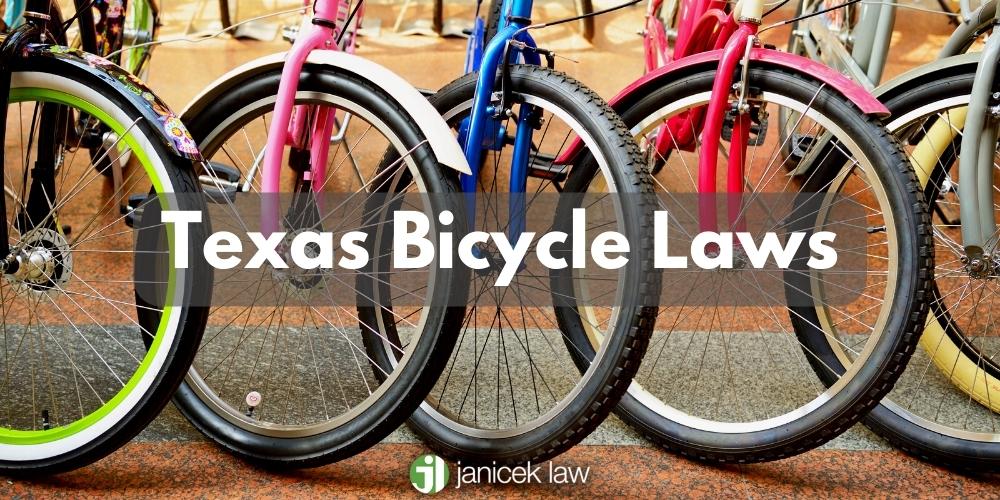Texas bicycle laws ensure that every person operating a bicycle follows the same traffic laws as motor vehicles to promote safe road-sharing and prevent accidents.
Cyclists must ride as near as practicable to the right curb or edge of the roadway when moving slower than other traffic, except when avoiding surface hazards or preparing for a left turn. When a designated bicycle lane is present, bicycle operators should use it to maintain the normal and reasonable flow of traffic. Safety regulations governing cyclists require a white light visible from the front and a red reflector or red light on the rear of the bicycle to ensure visibility from a distance, especially at night. Unfortunately, negligent driver operating behaviors, failure to yield, and hazardous road conditions contribute to serious accidents.
If you or a loved one has been injured due to a negligent driver or unsafe bicycle facilities, the Abogados de accidentes de bicicleta en San Antonio at our firm can help. Call 210-366-4949 para una consulta gratuita.
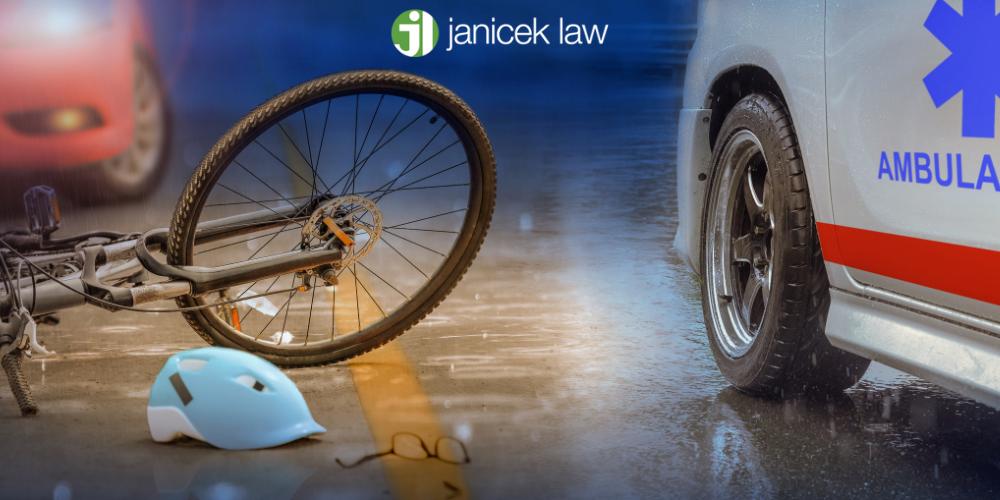
Texas Bike Laws
Texas bicycle laws clearly define the responsibilities of persons operating bicycles and distinguish them from toy vehicles, such as roller skates, sled toy vehicles, and similar devices. Under traffic laws, individuals using toy vehicles are not permitted on roadways designated for motor vehicles, as these are not considered suitable for safe road use. A person may not operate a bicycle while holding onto or being pulled by a motor vehicle, nor can they use a bicycle to tow a sled toy vehicle or another person on roller skates. Additionally, bicycles must be brake-capable, ensuring they can perform a braked wheel skid on clean pavement for safe stopping. These road and bicycle laws in Texas ensure any person operating a bicycle can safely travel. This also helps law enforcement officers prevent dangerous interactions between moving vehicles and persons operating bicycles, promoting safer traffic on the roadway.
Where Can a Person Operate a Bicycle Ride Under Texas Bicycle Laws?
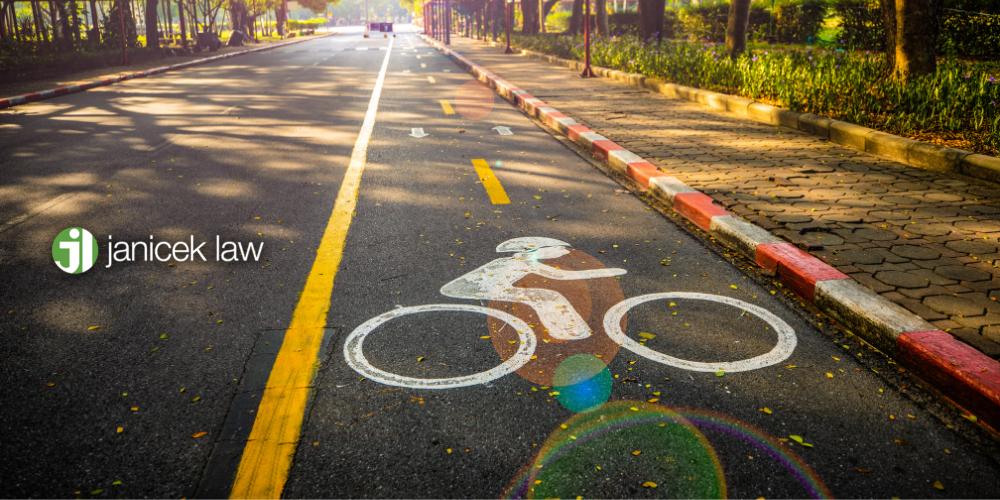
Person Operating a Bicycle On the Right Curb or Edge of the Roadway
A person operating a bicycle in Texas must ride as near as practicable to the right curb or edge of the roadway when moving slower than other traffic to maintain the normal and reasonable flow. However, exceptions allow cyclists to leave the right curb or edge to avoid surface hazards, pass a vehicle moving in the same direction, or prepare for a left turn at an intersection or private road. Cyclists should also be cautious of marked traffic lanes and bicycle lanes to ensure they are safely riding while following road and bicycle laws.
Person Operating a Bicycle On the Left Curb or Edge of the Roadway
A person operating a bicycle in Texas may ride near the left curb or edge of the roadway only on a one-way roadway that has two or more marked traffic lanes. In this situation, cyclists are allowed to safely travel near the left curb while still following traffic laws and maintaining the normal and reasonable flow of other traffic. However, cyclists must still obey hand signals when making a left turn, using their left arm extended horizontally to indicate their intent. Riders should also be aware of motor vehicles, moving vehicles, and any regulations governing bicycle use to ensure compliance with Texas bicycle laws.
Designated Bicycle Lane Adjacent
When a designated bicycle lane adjacent to a roadway is available, a person operating a bicycle should use it whenever possible to ensure safe riding while maintaining the normal and reasonable flow of traffic. However, Texas law allows cyclists to leave the designated bicycle lane when necessary to avoid surface hazards, pass a vehicle moving in the same direction, or prepare for a left turn. Riders must still follow all Texas bicycle laws, including using hand signals such as extending the left arm horizontally for turns. Persons operating bicycles should remain aware of motor vehicles and obstacles while riding in a bike lane to ensure they can safely travel without injuring pedestrians.
If you are a pedestrian who has been injured by bicycle traffic on the roadway, contact a skilled Abogado de accidentes de peatones en San Antonio.
Exceptions to the Curb or Edge Rule
Under Texas law, a person operating a bicycle must generally ride as near as practicable to the outside lane, curb, or edge of the roadway when moving slower than traffic, but there are key exceptions.
Any person operating a bicycle may leave the right curb or edge when avoiding surface hazards, passing a vehicle moving in the same direction, or when a designated bicycle lane adjacent is not safe to use.
Additionally, a cyclist may move away from the curb when preparing for a left turn at an intersection, onto a private road, or into a driveway. One-lane roadways that are too narrow for both a bicycle and a moving vehicle to travel side by side, a person may not operate their bike on a curb or edge for safety reasons. These exceptions allow for safe riding while following Texas bicycle laws.
Sidewalks and Private Roads
Texas bicycle laws do not provide a statewide rule prohibiting a person operating a bicycle from riding on sidewalks, but local governments may enforce their own safety regulations that govern sidewalk use. Any person operating a bicycle should check with local law enforcement agencies to determine whether riding on sidewalks is allowed in their area. On a private road, property owners may set restrictions on bicycle operators, limiting access or requiring specific safety equipment. While sidewalks may seem safer than marked traffic lanes, cyclists must still yield to pedestrians and exercise caution at intersections and driveways.
One-Laned Roadway
On a one-laned roadway, a person operating a bicycle must follow the same laws as moving vehicles and ensure they are safely riding. If a cyclist is on a single-lane road and is moving slower than other vehicles, they must ride as near as practicable to the curb or edge of the roadway, except when avoiding hazards, passing a car moving in the same direction, or preparing for a to turn left. Cyclists must also be aware of marked traffic lanes and ensure they are not impeding traffic on the roadway. Following Texas bike laws on a one-laned roadway helps protect bicycle operators while keeping roadways safe for all users.
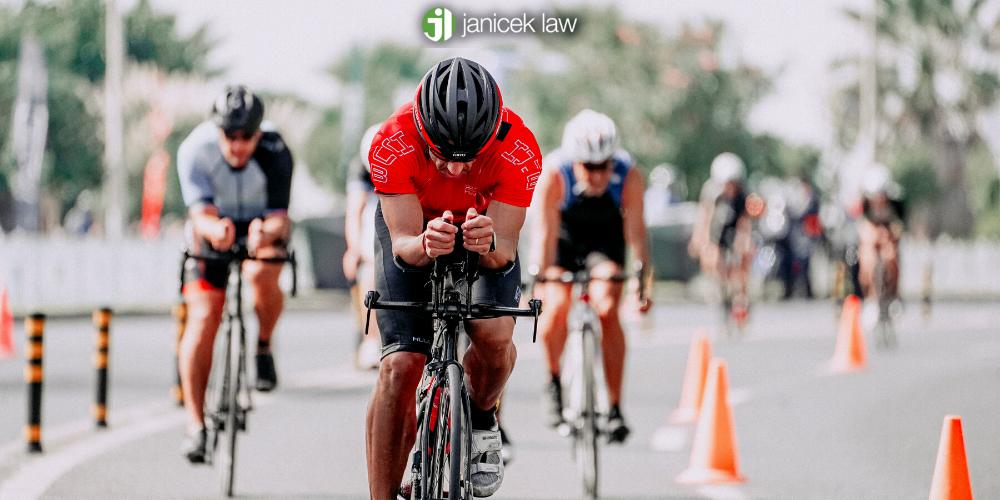
Safety Equipment and Safety Regulations Governing Bicycle Operators in Texas
La seguridad siempre debe ser lo primero al andar en bicicleta. Las leyes sobre bicicletas de Texas exigen que las bicicletas que se conducen de noche deben estar equipadas con una luz blanca delantera visible desde una distancia de 500 pies adelante y una luz roja trasera en la parte trasera de la bicicleta que sea visible desde una distancia de 500 pies. Estas luces o reflectores deben ser visibles cuando la luz de los faros de los vehículos de motor incida sobre ellos. Se recomienda encarecidamente utilizar cascos y equipo reflectante adecuado, aunque no es obligatorio para adultos.
Además, los ciclistas deben tener un freno capaz de crear un derrape de la rueda frenada sobre pavimento seco para que puedan detenerse de la forma más segura y rápida posible si es necesario. La ley de Texas no exige que todos los ciclistas usen casco mientras conducen, aunque esto es muy recomendable porque las bicicletas no brindan absolutamente ninguna protección contra otros vehículos motorizados en caso de un accidente.
Leyes del manillar
Under Texas bicycle laws, a person operating a bicycle on a roadway shall ride with at least one hand on the handlebars at all times. This regulation ensures that persons operating bicycles maintain control and balance, reducing the risk of collisions with fixed or moving objects.
Brake Capable and Braked Wheel Skid on Clean Pavement
Under Texas bike laws, a person operating a bicycle must ensure that their bike is brake capable, meaning it has functional brakes that allow for a braked wheel skid on clean pavement. This requirement ensures that the person operating a bicycle can stop safely when encountering fixed or moving objects. A properly functioning brake system helps cyclists maintain control while safely traveling in a designated bicycle lane adjacent to vehicles or along the edge of the roadway. Compliance is enforced by local law enforcement agencies to promote safe road use.
Red Reflector
Under Texas bike laws, a person operating a bicycle at night must have a red reflector on the rear of the bicycle that is visible from a distance when illuminated by motor vehicle headlamps. This safety requirement ensures that any person operating a bicycle remains visible to vehicles. In addition to a red reflector, cyclists may also use a red light for increased visibility. Local law enforcement agencies may enforce red reflector and red light requirements to promote safer roadways for all users.
White Light
Under Texas bike laws, a person operating a bicycle at night must have a white light visible from a distance of at least 500 feet on the front of the bike. This requirement ensures that any cyclist in the bike lane or edge of the roadway can be seen by vehicles.
Person Riding Two Abreast
Under Texas bike laws, persons riding two abreast are allowed as long as they do not impede the flow of traffic and the bike has another regular seat attached for this purpose. When riding on the regular seat attached to the bike, cyclists must stay within a single lane and follow all the discussed rules. If a designated bicycle lane is present, persons riding two abreast should use it where practical.
Texas Traffic Laws Regarding Hand Signals and Traffic Lights
Under the Texas Transportation Code, a person operating a bicycle near traffic must use some form of hand and arm signal when turning.
Hand and Arm Signals For Bikes Near Other Traffic On The Roadway
In Texas, the following hand signals or hand and arm signals include:
- Left turn: Hand and arm extended horizontally.
- Right turn: Hand and arm upward or right arm horizontally extended.
- Stopping or decreasing speed: Hand and arm extended downward.
Following normal and reasonable movement while making turns or stopping.
Who Has the Right of Way at A Red Light in Texas?
In Texas, the right of way at a red light depends on the type of intersection. Under Texas bike laws, cyclists must follow the same laws as drivers, meaning they must stop at a red light unless otherwise directed. If a driver is making a right turn, they may proceed after coming to a complete stop and yielding to traffic on the roadway and pedestrians. When making a left turn from a single-lane roadway onto another single-lane roadway, the driver or cyclist may turn left on red after stopping and ensuring it is safe.
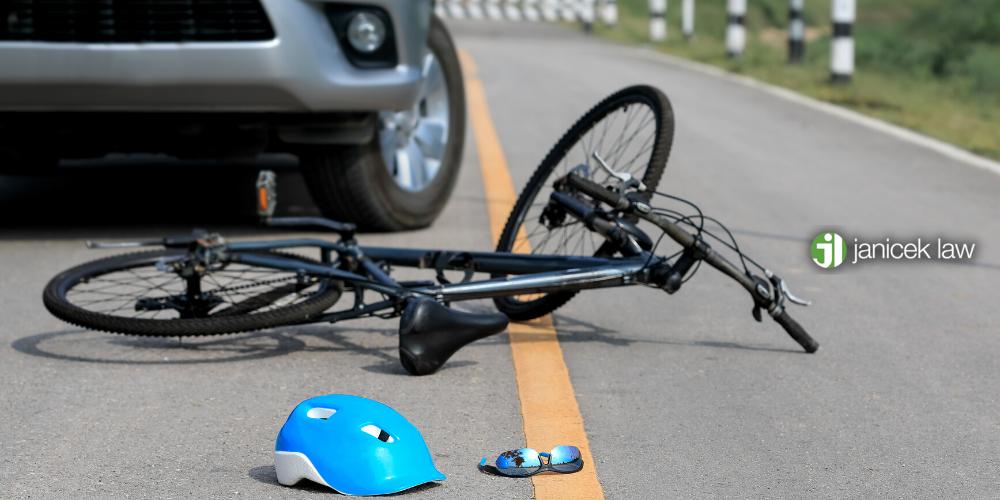
Texas Bike Laws for Competitive Bicycle Racing
Before engaging in a competitive bicycle race on public roads, appropriate permits must be obtained from local law enforcement agencies. Additionally, participants should adhere to specific safety guidelines and rules outlined by the event organizers, ensuring the safety of racers, spectators, and other road users.
Texas E-Bike Laws
In Texas, electric bicycles (e-bikes) are classified into three categories based on their electric motor power and speed capabilities under Texas e-bike laws:
- Class 1: A person riding an electric bicycle in this category must pedal to provide human power the motor to provide assistance, which ceases at 20 mph.
- Class 2: The electric bicycle has a throttle that allows movement without human power, but assistance stops at 20 mph.
- Class 3: Designed for higher speeds, the electric bicycle motor assists only with human power and stops at 28 mph.
An electric bicycle must have operable pedals and an electric motor of 750 watts or less, ensuring compliance with Texas electric bicycle laws. An e-bike rider must ensure that their electric bicycle has a permanent and regular seat, as required under Texas bike laws
Texas Electric Bicycle Laws for Operation
- Road Access: An e-bike rider must follow standard laws and use a designated bike lane adjacent to traffic when available. On laned roads, riders should ride with the flow of traffic.
- Right Curb or Edge: Riders must ride as near to the right curb or edge of the roadway as practical unless avoiding fixed or moving objects, preparing to turn left, or traveling in a bike lane.
- Helmet Use: While there is no statewide requirement, local law enforcement officers may impose safety regulations for helmet use, particularly for persons riding Class 3 e-bikes.
- Sidewalks and Trails: Rules regarding e-bike use on private roads, sidewalks, and bicycle facilities vary, and cyclists should check with local law enforcement officers for specific regulations.
- Persons Riding Two Abreast: While e-bike riders can ride two abreast in a single lane, they must not obstruct traffic on the roadway or interfere with the exclusive operation of other vehicles.
Do You Need a License For An Electric Bike in Texas?
No, Texas does not require a license to operate an electric bicycle (e-bike). Under Texas e-bike laws, e-bikes do not require a driver operating license, registration, or insurance.
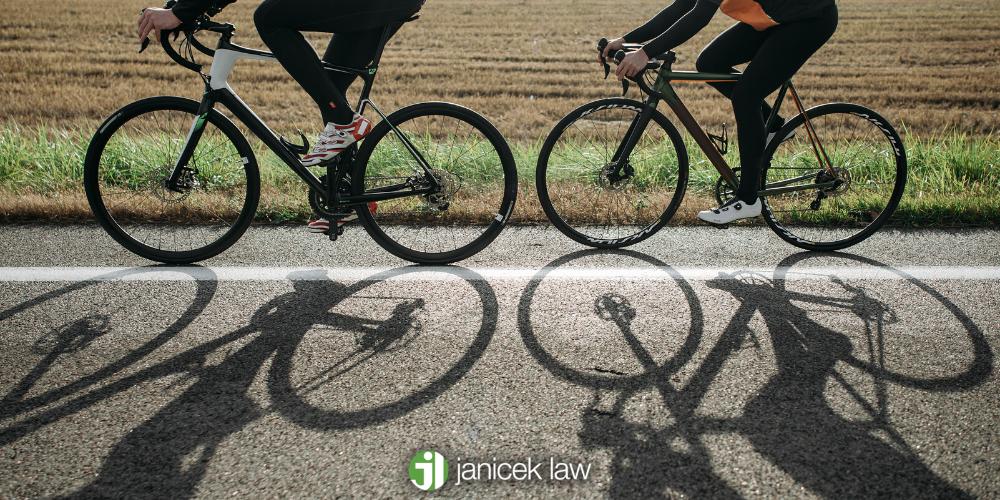
Texas Dirt Bike Laws
Texas defines motor-assisted scooters as self-propelled devices with at least two wheels, a braking system, a gas or electric motor (40cc or less), and a deck for standing or sitting.
- No License Required: Riding a dirt bike off-road does not require a driver’s license. However, operating on public land mandates obtaining an Off-Highway Vehicle (OHV) decal from the Texas Parks and Wildlife Department.
- Age Restrictions: There is no minimum age for off-road dirt bike operation in Texas. Nevertheless, young riders should be supervised by experienced individuals to ensure safety.
Can You Ride Dirt Bikes on the Road in Texas?
In Texas, dirt bikes are not street legal unless modified to meet Texas DMV requirements. To ride on public roads, a dirt bike must have:
- Class M motorcycle license
- DOT-approved tires, headlights, brake lights, turn signals, mirrors, horn, and muffler
- State inspection, registration, and motorcycle insurance
- Helmet (required for riders under 21)
Without these modifications, riding a dirt bike on public roads is illegal. However, they can be used on private property, off-road trails, and public lands with an OHV decal. Contact a San Antonio dirt bike accident lawyer para una consulta gratuita.
Texas E-Scooter Laws
Texas defines motor-assisted scooters as self-propelled devices with at least two wheels, a braking system, a gas or electric motor (40cc or less), and a deck for standing or sitting.
- Road Use: E-scooters can be operated on streets with speed limits of 35 mph or less and may cross intersections where limits exceed 35 mph.
- Sidewalks & Bike Paths: Allowed unless local regulations prohibit them.
- Local Restrictions: Cities and counties can regulate or ban e-scooters for safety reasons.
- Helmet Use: Not required but strongly recommended.
- Speed Compliance: Riders must follow speed limits and adjust for traffic conditions.
Understanding these Texas e-scooter laws and local law enforcement rules ensures a safe and legal riding experience. Contact a San Antonio electric scooter accident lawyer para una consulta gratuita para obtener más información.
How a San Antonio Bike Accident Lawyer Can Help
The experienced Abogados de lesiones personales en San Antonio at Janicek Law can provide the guidance and representation you need to navigate the complexities of Texas bicycle laws, ensuring that you get the justice and compensation you deserve.
Proving Fault in a Motor-Vehicle-Related Bicycle Accident
Proving fault in a bike accident requires examining all the discussed rules under Texas bike laws, including whether a driver operating a vehicle or bike rider, or persons riding two abreast followed proper Texas bike laws. Under comparative negligence laws in Texas, either the person on the bike or the driver may be partially at fault, impacting compensation. For example, cyclists must signal turns using their arm upward for a right turn or arm horizontally for a left turn, and failing to do so could affect liability. Additionally, if a rider was struck at the rear of the bicycle, it may indicate driver negligence. However, cyclists must also follow rules restricting them from using roller skates or interfering with the exclusive operation of vehicles on the road. We’ll determine any duty applicable to the rider or driver operating the vehicle in question.
Llamar 210-366-4949 and allow us to protect your legal rights.

